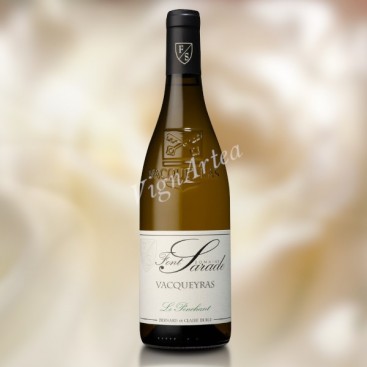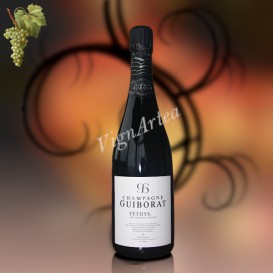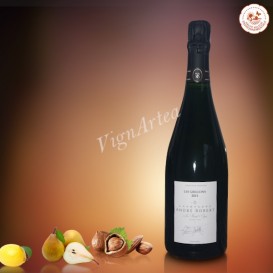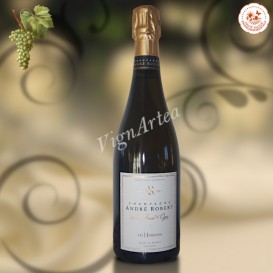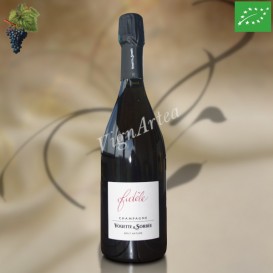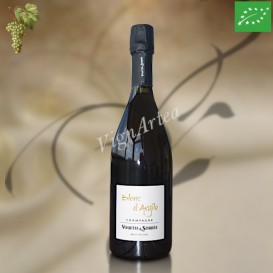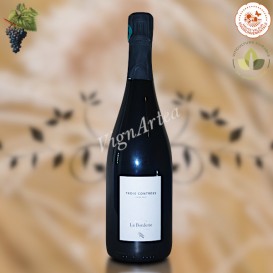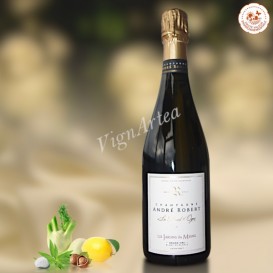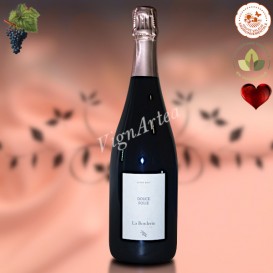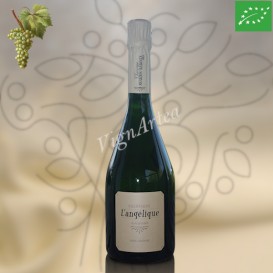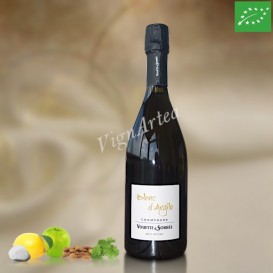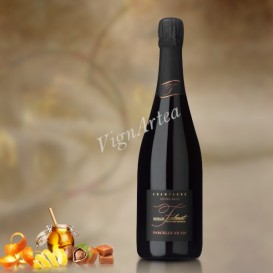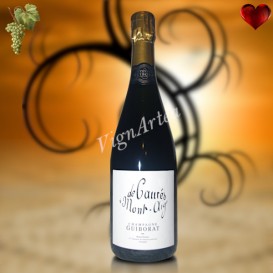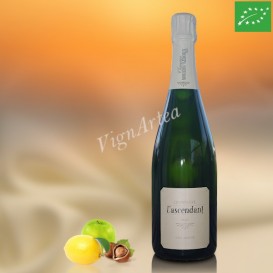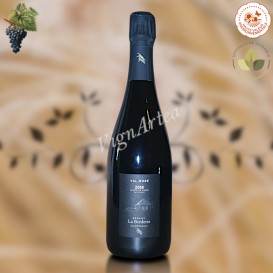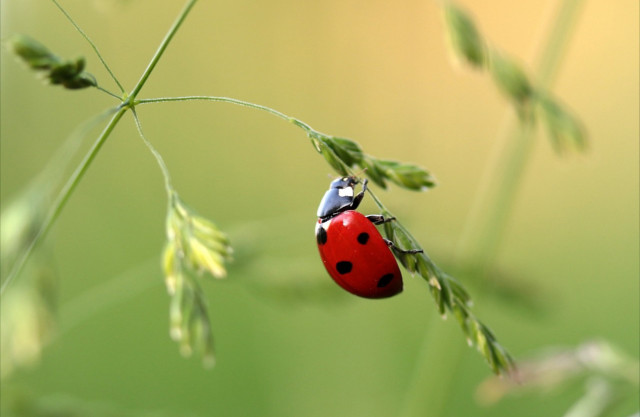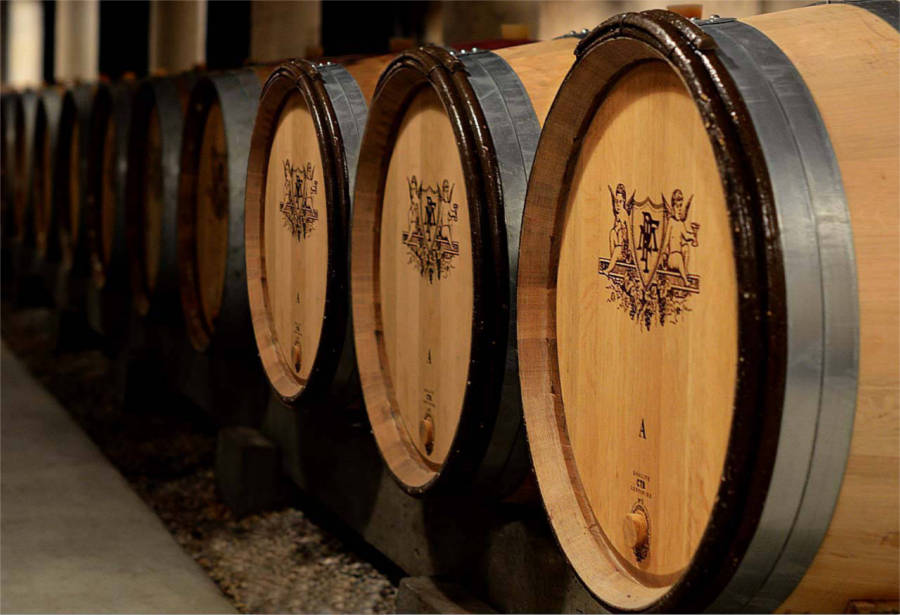VACQUEYRAS LE PENCHANT 2021 (Domaine Font Sarade)
RHÔNE - AOP VACQUEYRAS - DRY WHITE WINE
Grape varieties: Roussanne (50%) - Viognier (25%) - Clairette (25%).
Native yeasts
Ageing in stainless steel tanks for 6 to 8 months
- Nose: elegant and expressive. Slightly aniseed notes, aromas of flowers and white peaches..
- Palate: supple attack. Salivating. Beautiful length.
- Tasting date: April 2023.
- OUR OPINION: a lovely white Vacqueyras, delicate, tasty and fresh.
TERROIR
The vines that make up LE PENCHANT are planted in the Bel Air district of Vacqueyras.
These plots used to be planted with red grapes were uprooted and replaced by white grapes between 2009 and 2014. The production of Vacqueyras white wines is indeed very rare, the white vineyard's surface representing barely more than 1% of the total vineyard surface in this designation; this means that the production of these wines is confidential.
The Bel Air district is located on the Riss terrace (a river terrace formed during the penultimate great ice age of the Quaternary period in the Alps, known as the Riss Glaciation), which is a vast stony plateau overlooking the Ouvèze River by 30 to 40 meters.
The soil consists of a thin layer of decarbonated sandstone and flint packed in a red sandy clay and resting on a thick filtering pebble covering the blue marls of the Pliocene (-5 to -1 Ma) that can be seen outcropping on the slopes.
The river terrace of the Riss has a high calorific power, it offers good water reserves but without excess, which leaves this terroir sensitive to drought.
The plots of LE PENCHANT are located on steep slopes, where the famous blue marls of the Pliocene outcrop, and face the setting sun.
WINEGROWING & WINEMAKING
The vines of the Bel Air district are young, only a dozen years old. They are cultivated according to the Sustainable Farming principles and the rows are grassed. Their yield is voluntarily limited to 36 hl/ha.
The grapes are manually harvested and destemmed then pressed by direct pressing. After a short period of rest to settle the must, it is racked into stainless steel tanks. The fermentation is done in cold environment with the native yeasts.
The aging phase in stainless steel tanks lasts from 6 to 8 months.
The must is then lightly filtered and bottled.
The producer gives this wine 3 to 4 years of aging potential.
The few bottles of the 2014 vintage that we have in our cellar have proven to us that the wine holds longer, it develops, beyond 5 to 6 years of cellar aging, slightly oxidative aromas. You either like it or you don't.
Personally, I find that the slightly oxidative touch of a white wine is pleasant because it allows it to be paired more easily, with poultry for example. In my case, I like to serve it with a boiled chicken.
| Country | Rhône Valley |
| Color | White |
| Orange wines | No |
| Clay amphorae wines | No |
| Type | Dry |
| Vintage | 2021 |
| Capacity | 75 cl |
| Variety | Roussanne (50%) - Viognier (25%) - Clairette (25%). |
| Main Grape Variety(ies) | Roussanne |
| Alcohol rate | 13,5 % |
| Quality Designation | Vacqueyras |
| Cellar Potential | From 3 to 5 years |
| Service advise | 12-14°C (54-57°F). Open 1/4 hr before the service. |
| Culture Methods | Sustainable cultivation method |
| Fining | No |
| Filtering | Yes |
| Comments | Native yeasts ♦ Cold fermentations ♦ Ageing in stainless steel tanks for 6 to 8 months. |
| Stopper | Natural cork |

